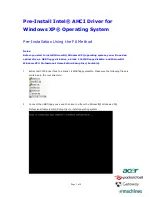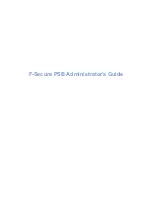
Default Schemes
XML/HTML Formatting comes with two default schemes. Each time that you open an HTML file for edit-
ing, by default, the
html (default html)
scheme is used. Each time an XML file is opened, the
xml
(default xml)
scheme is used. You can configure the settings for each default scheme or specify your
own default schemes (see
Specifying a Different Default Scheme
).
The
html (default html)
scheme is comprised of a
(default)
tag as well as a list of commonly used HTML
tags, that are preconfigured with standard settings. The
xml (default xml)
scheme is comprised of one
(default)
tag preconfigured with standard settings.
For any tag that does not appear in the Tags list, the
(default)
tag settings are used.
Working with Schemes
282
Summary of Contents for Corev3.3 for Eclipse
Page 1: ...Think Slick Corev3 3 for Eclipse...
Page 2: ......
Page 3: ...SlickEdit Core v3 3 for Eclipse...
Page 5: ......
Page 6: ......
Page 14: ...xii...
Page 20: ...xviii...
Page 22: ...xx...
Page 23: ...Chapter 1 Introduction 1...
Page 41: ...Chapter 3 User Interface 19...
Page 61: ...Chapter 4 User Preferences 39...
Page 80: ...BODY BODY HTML HTMLEOF Restoring Settings on Startup 58...
Page 82: ...60...
Page 83: ...Chapter 5 Context Tagging 61...
Page 97: ...Chapter 6 Editing Features 75...
Page 124: ...Code Templates 102...
Page 238: ...Figure 6 49 Test Parsing Configuration Example 1 C Refactoring 216...
Page 241: ...Figure 6 51 Test Parsing Configuration Example 3 Reviewing Refactoring Changes 219...
Page 250: ...228...
Page 251: ...Chapter 7 Language Specific Editing 229...
Page 328: ...306...
Page 329: ...Chapter 8 Tools and Utilities 307...
Page 350: ...328...
Page 351: ...Chapter 9 Macros and Macro Programming 329...
Page 360: ...338...
Page 361: ...Chapter 10 SlickEdit Core Dialogs 339...
Page 375: ...Find and Replace View 353...
Page 491: ...Chapter 11 Appendix 469...
Page 567: ......
Page 568: ......
















































